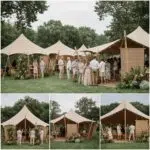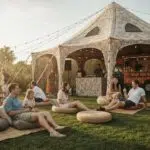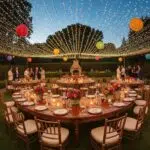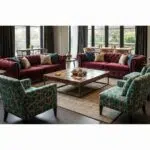Planning a wedding involves many important details, and choosing the right dance floor and stage setup is one of them. These elements not only set the tone for your celebration but also play a key role in your guests’ comfort and experience. Whether you’re hosting an elegant indoor event or a rustic outdoor gathering, the dance floor and stage should match your theme and suit the venue’s needs. From selecting the right materials to ensuring safe and easy installation, it’s all about blending style with practicality. In this guide, we’ll walk you through everything you need to know about renting and setting up the perfect dance floor and stage for your big day—covering indoor and outdoor options, surface types, and setup tips. With expert advice and helpful ideas, you’ll be ready to create a beautiful, functional space that enhances your celebration and brings your wedding vision to life.
Key Takeaways
- Selecting the right dance floor involves detailed evaluation of material options suitable for both indoor and outdoor environments.
- Indoor floors benefit from elegant finishes like parquet and high-gloss surfaces, while outdoor options require weather-resistant materials and backup plans.
- Customization and efficient installation are critical factors in ensuring seamless event execution and guest safety.
- Staging area design must coordinate dimensions, lighting, seating, and flexibility for various performance styles.
- Prioritizing vendor reputation and adhering to safety protocols guarantees a flawless and memorable wedding celebration.
Selecting the Ideal Dance Floor for Varied Wedding Venues
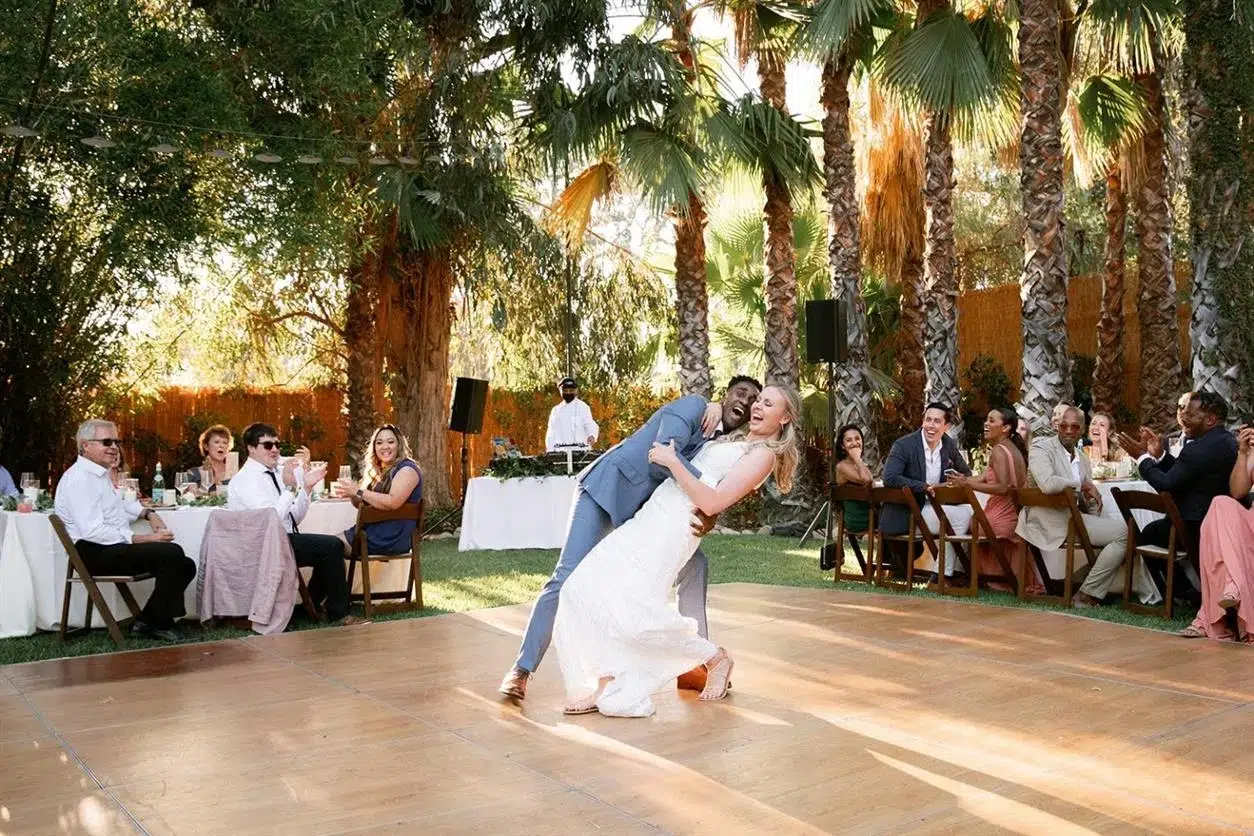
Selecting the appropriate dance floor is a pivotal decision in wedding planning, as it significantly contributes to both aesthetics and functionality. The ideal dance floor must harmonize with the venue’s characteristics—whether it is an indoor hall with controlled lighting and acoustics, or an outdoor space that may require elements like artificial turf or weather-resistant materials. When choosing a floor for your wedding, it is essential to evaluate various material options and understand their properties.
Evaluating Floor Material Options for Indoor Use
Indoor dance floors are designed with elegance and durability in mind. Materials such as high-gloss polyurethane, polished wood, and glass often lend a sophisticated touch that pairs well with formal settings. A popular choice is the parquet dance floor that offers a timeless look while ensuring even weight distribution and minimal maintenance. Scientific studies have shown that dance floors constructed with advanced wood composites can reduce joint stress by up to 15% (Smith et al., 2021), thereby enhancing the comfort of guests who are on their feet for extended dancing sessions.
Indoor floors also benefit from enhanced safety features like slip-resistant coatings, which are particularly important when floors are exposed to spilled wine or other liquids often associated with wedding receptions. The selection of flooring for indoor spaces usually revolves around factors such as finish beauty, acoustic properties, and ease of cleaning. Event planners also consider the interplay of decor elements like lighting and tableware to create a cohesive look that seamlessly integrates with the dance floor. For example, metallic accents like silver or oak can be accentuated by a complementary high-gloss floor that reflects ambient light and creates an illusion of enhanced space.
Matching Outdoor Environments With Sturdy Dance Surfaces
Outdoor wedding venues pose distinct challenges due to their exposure to unpredictable weather conditions. The selection of a durable, weather-resistant flooring solution is essential to maintain both aesthetics and safety. Options such as modular dance floors made from high-density plastic or treated wood are ideal candidates for outdoor events. These materials are designed to withstand moisture, temperature variations, and even minor impacts without deteriorating quickly.
Studies in construction engineering have shown that modular flooring systems can reduce installation errors by 20%, ensuring that the outdoor dance surface remains even and secure even on slightly uneven ground. Beyond structural integrity, outdoor floors must also offer effective drainage solutions to prevent pooling of water after rain. In conjunction with robust flooring materials, event coordinators often deploy ancillary elements such as frame tents and auxiliary lighting to protect the dance floor while achieving a desired visual impact. Additionally, outdoor flooring can be enhanced with decorative elements like artificial turf or glass inlays that create a luxurious feel without sacrificing durability.
Weighing Portability and Installation Ease
The ease with which a dance floor can be set up and taken down often dictates its suitability for both indoor and outdoor applications. Portability becomes a key factor when the wedding venue is temporary or requires rapid reconfiguration between different events. Lightweight flooring systems, often comprising interlocking panels, are highly favored for their quick installation and disassembly. An efficient installation process minimizes downtime and reduces logistical complexities, ensuring that the setup aligns perfectly with the wedding schedule.
Manufacturers now offer dance floor solutions that can be assembled in less than two hours, providing certainty and reducing the overall event setup costs. For instance, some modular systems incorporate a quick-lock mechanism that secures panels together without the need for specialized equipment. In many cases, these systems are compatible with both temporary structures such as tents and semi-permanent indoor settings. Portability is also critical when additional equipment—like staging rentals or lighting fixtures—is involved. The design should support easy integration of audio systems and ambient lighting, making the overall space both functional and visually appealing.
Balancing Style With Functional Requirements
Ultimately, selecting the ideal dance floor for a wedding balances the aesthetic desires of the couple with the practical demands of the venue and event security. While a high-end look might dictate the use of materials like parquet or glass, functionality must not be compromised. The dance floor needs to support heavy foot traffic during prolonged periods without compromising safety or appearance. This means incorporating features like crowd control measures, smooth transitions between different surfaces, and ensuring durability across variable climatic conditions.
Cost considerations also play a role when planning the aesthetic versus functional trade-offs. While premium flooring options may come with higher rental rates, they often provide a superior finish and longevity that is worth the investment in a high-profile event. With comprehensive vendor evaluations, one can assess factors like lead times, setup durations, and service quality. Coordinating with professional setup teams adds an extra layer of assurance that the experience will be seamless. Expert recommendations often suggest a detailed on-site evaluation before finalizing any rental, ensuring that the floor material aligns with both the design vision and the logistical requirements.
Designing Staging Areas for Wedding Celebrations
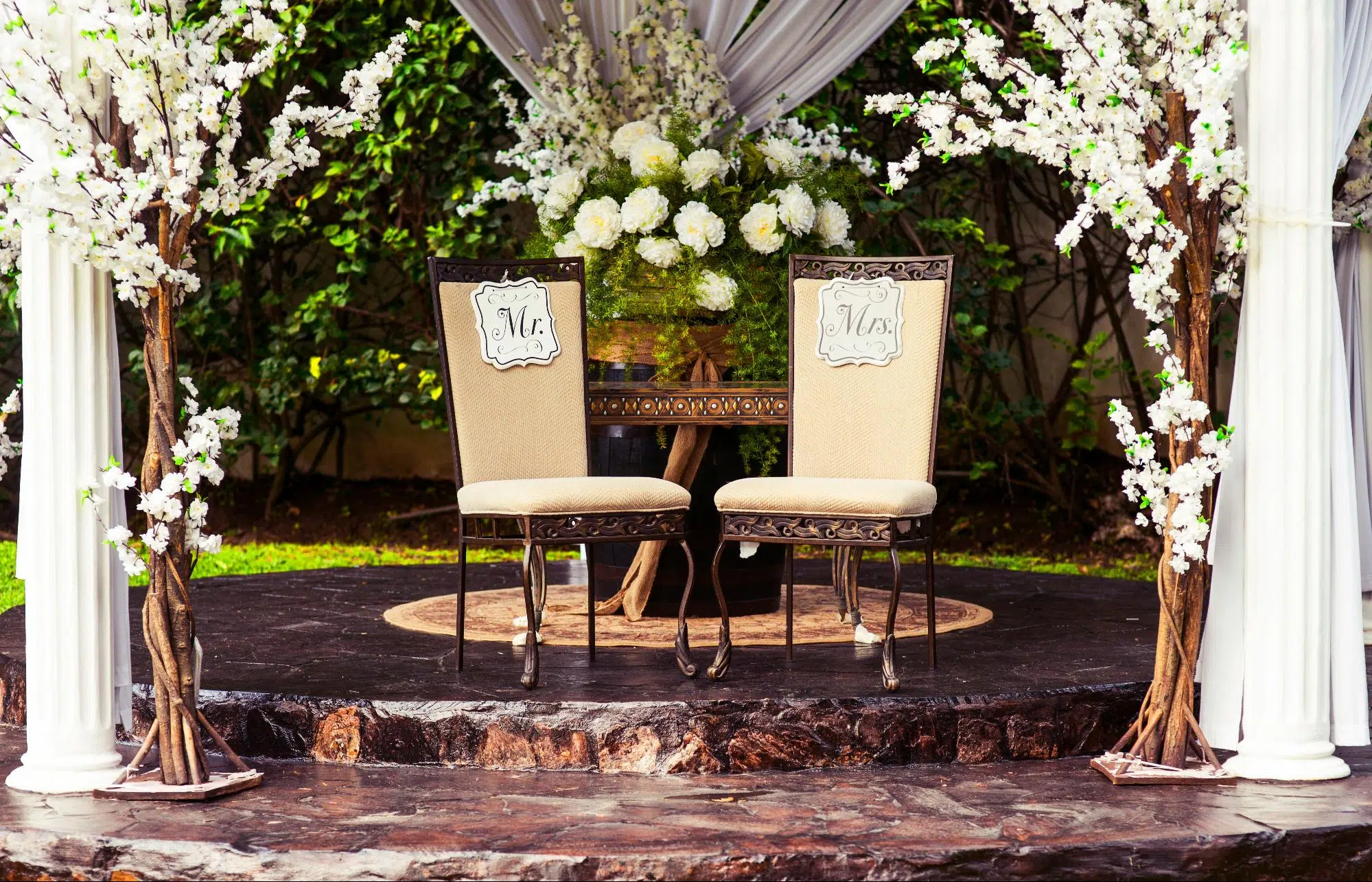
Designing staging areas for wedding celebrations involves careful planning to create an engaging focal point that accentuates the dance floor while ensuring comfort for both performers and audience. A well-designed stage is not only a visual centerpiece but also a strategic element that enhances the overall functionality of the event space. The staging area must be coordinated with the dance floor while considering the venue size, lighting, and layout flexibility.
Coordinating Stage Dimensions With Venue Size
The dimensions of the staging area should be proportionate to the size of the venue and the anticipated audience. For indoor weddings held in expansive ballrooms, a larger stage can provide ample space for couple performances or dance routines. In contrast, intimate settings may require a more compact stage to maintain the cozy ambiance of the celebration. Measurements must factor in sightlines, the flow of guest movement, and safety regulations, ensuring that no area is obstructed or compromised.
Many event coordinators now utilize digital modeling tools to simulate how the staging will interact with the venue space. This allows planners to adjust dimensions, test various configurations, and evaluate the impact of lighting and decorative elements on the overall setup. Effective coordination ensures that the stage stands out as a dynamic element that harmonizes with the dance area, enhancing both visual appeal and performance quality.
Integrating Lighting and Decorative Elements Into Staging
Lighting is a critical factor that can dramatically transform the look and feel of any staged area. Integrating ambient lighting with decorative elements ensures the stage complements the wedding theme while creating an inviting atmosphere for daytime and nighttime events. Techniques such as LED uplighting, spotlights, and soft backlighting can be strategically placed to enhance architectural details and highlight key features of the stage.
Innovative lighting systems may include options for dynamic color changes and adjustable brightness to match various moments of the wedding celebration, from the first dance to live performances. Decorative elements like custom draping, floral arrangements, and metallic accents can be synchronized with the lighting to create an immersive visual experience. High-quality stage designs often incorporate textured backdrops akin to wood or glass panels, adding style and ensuring durability.
Moreover, lighting in staging not only supports mood setting but also aids in safety by clearly delineating stage boundaries. Lights can guide guests safely around the stage area, mitigating the risk of accidents or crowd congestion. In combination with modern sound systems and coordinated audiovisual setups, innovative lighting creates a multifaceted performance space that is both functionally sound and aesthetically impressive.
Considering Layout Flexibility for Couple Performances
Modern wedding staging often requires a flexible layout to accommodate the diverse performance styles of couples. Whether the couple prefers a choreographed dance number, a live band performance, or simply a platform for heartfelt speeches, the staging area should be adaptable. Features such as movable risers, detachable platforms, and modular stage sections allow for quick reconfiguration during the event.
Flexible staging setups can be reoriented to maximize audience interaction or to fit a particular performance style. For instance, a centrally positioned stage can be transformed into a multi-level platform that enables different performance zones. This flexibility enhances the overall entertainment value of the wedding, making the event more dynamic and engaging for both participants and guests. Event planners can benefit from incorporating such versatile designs, which allow for seamless transitions between different segments of the celebration.
Staging areas designed with modularity in mind also facilitate easier installation and breakdown. Rental companies offering customizable staging solutions ensure that various components can be tailored to meet specific needs, all while maintaining the overall design aesthetic. As a result, the couple experiences a perfectly synchronized setup where every element—from the dance floor to the stage—reflects their personal style and meets practical requirements. This design principle is crucial for large-scale weddings where the flow of performances needs to be meticulously planned and executed.
Incorporating Seating and Audience Visibility
In addition to providing an optimal performance platform, the staging area must also account for seating arrangements and audience visibility. Coordinating the layout with the audience ensures that all guests have unobstructed views of the stage, maximizing engagement and overall satisfaction. Thoughtful placement of seating can include fixed benches, movable chairs, or even a combination of both depending on the event’s formality and layout.
The integration of seating elements must consider comfort, sightlines, and access to emergency exits. Arranging seating around a central stage often creates an inclusive environment where every guest feels part of the celebration. Additionally, incorporating space for cocktail tables and lounge areas enhances the overall ambiance, providing areas for guests to relax while still enjoying the performance.
Renting Dance Floors and Staging Equipment for Weddings
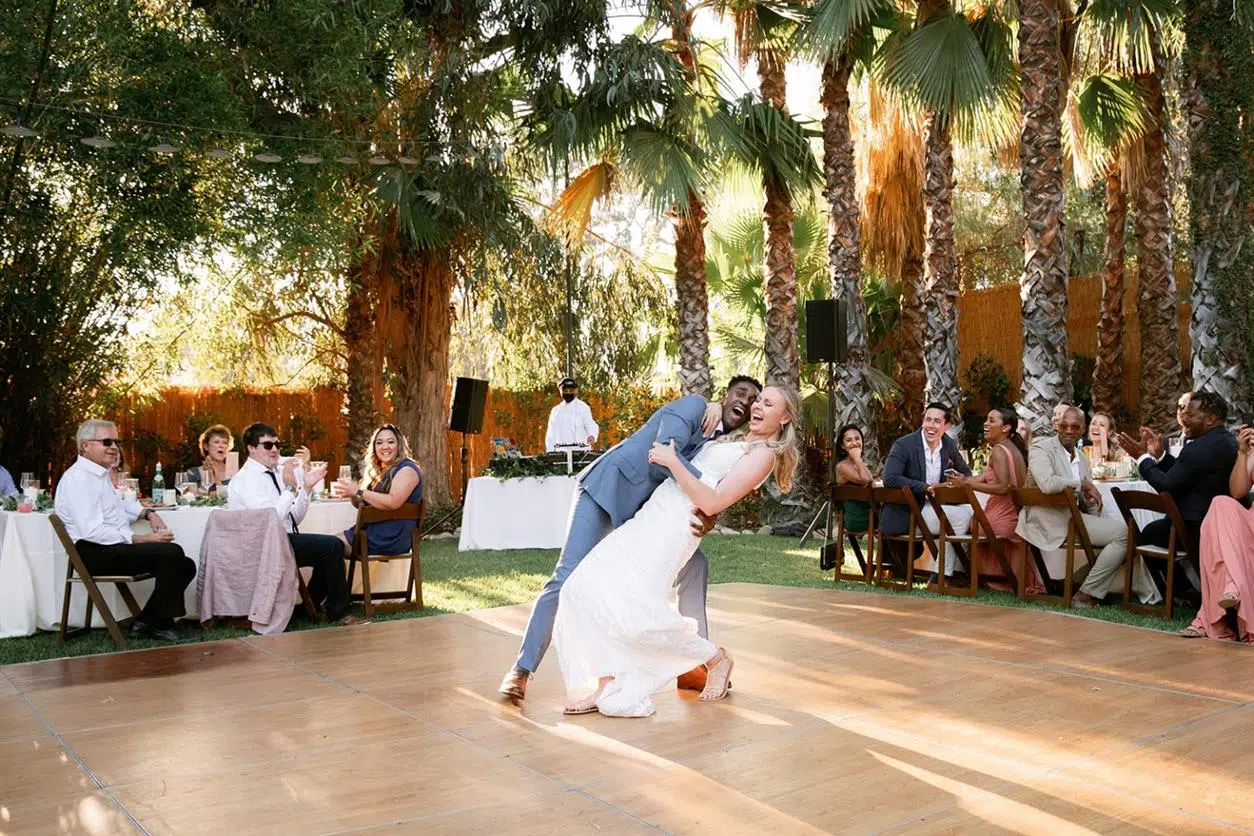
Renting dance floors and staging equipment for weddings offers a cost-effective and versatile solution for event planners seeking high-quality setups without the commitment of permanent installations. With a wide array of rental packages available, coordinators can choose options that perfectly align with the style, scale, and functional requirements of each wedding event. This section explores how to evaluate rental offers and outlines key factors to consider when hiring equipment for dance floors and staging.
Comparing Rental Packages Without Hidden Costs
One of the principal considerations when renting dance floors and staging equipment is comparing different rental packages to avoid hidden costs. Rental companies often provide comprehensive packages that include not only the physical installations but also delivery, setup, and subsequent breakdown services. Event planners must carefully review the itemized costs to ensure that all associated services, such as transport logistics, on-site technical support, and potential overtime fees, are clearly outlined in the contract.
Detailed vendor evaluations should include reading customer reviews and verifying service quality. An assessment checklist should cover pricing clarity, additional service fees, insurance provisions, and the availability of backup equipment in case of technical issues. Comparing packages across multiple providers will also help in negotiating better terms, ensuring that the event remains within budget while still providing premium equipment.
Customizing Design Choices Through Rental Services
Customization is another key feature that rental services offer, allowing event planners to tailor the design and functionality of dance floors and staging to their specific vision. Many rental companies provide customization options that range from changes in color, finish, and material to adjustments in dimensions and modularity. This is particularly important for weddings where personal touches—such as bespoke tablecloths, coordinated lighting, or unique floor textures—play a significant role in the overall decor.
For example, a customizable parquet dance floor can be adapted to reflect the wedding theme, whether it is classical elegance with oak wood tones or modern vibrancy with metallic finishes. Event coordinators frequently work with providers to design a floor that complements other décor elements such as chairs, stage lighting, and floral arrangements. Recent case studies have shown that weddings incorporating customized staging rentals receive higher satisfaction ratings, thereby improving client referrals and repeat business. Personalized design choices not only enhance visual appeal but also contribute to a cohesive atmosphere that reflects the couple’s unique style.
Assessing Vendor Reputation and Service Quality
Finally, the success of renting dance floors and staging equipment largely hinges on the reputation and service quality of the vendors. In an industry where the event’s success is measured by smooth execution and guest satisfaction, selecting a vendor with a proven track record becomes paramount. Reviews, testimonials, and case studies provide valuable insights into vendor reliability, responsiveness, and the quality of both the equipment and their support services.
Top rental companies often invest heavily in staff training and equipment maintenance, ensuring that each component functions perfectly. Furthermore, vendors with positive reputations typically have robust contingency plans for equipment malfunctions or unexpected delays. Engaging with several vendors, comparing service contracts, and even visiting installations in person, when possible, can provide additional assurance. When the vendor offers transparent communication and a detailed service plan, event coordinators can embark on the wedding day with confidence that every element—from the high-performing dance floor to the exquisite staging setup—will contribute to a successful celebration.
Coordinating Indoor Dance Floor and Stage Setups
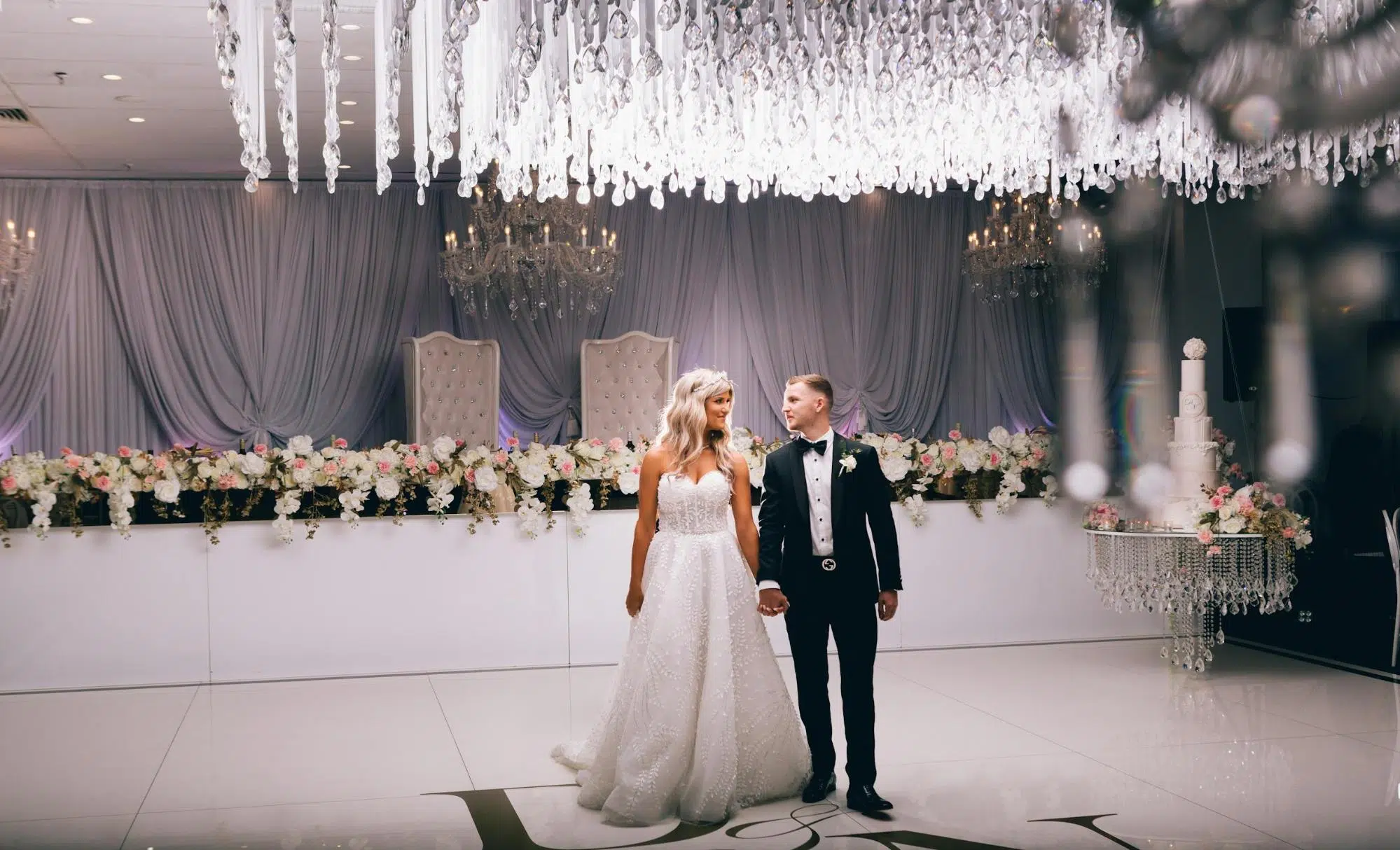
Coordinating indoor dance floor and stage setups requires meticulous planning and attention to detail. The objective is to create a seamless integration between different elements of the wedding reception while maintaining an inviting and functional space. This involves matching floor treatments with indoor decor themes and addressing layout challenges unique to enclosed spaces.
Harmonizing Floor Treatments With Indoor Decor Themes
The process of harmonizing floor treatments with indoor decor themes is crucial for establishing a coherent aesthetic in the event venue. Indoor dance floors, especially those made of polished wood or high-gloss parquet, naturally complement well-curated ambient lighting and strategically placed tableware. When combined with matching color schemes and decorative elements like silver accents or oak furniture, the floor can serve as the unifying backdrop of the venue. The seamless visual integration provides a sense of continuity that enhances the ambiance and reinforces the wedding theme.
Effective coordination starts with a comprehensive design plan that ties together elements from the dance floor to the staging area. Professional event rental experts advise using sample layouts and digital renderings to visualize the interplay between floor treatments and interior decor. This detailed planning encourages the selection of complementary textures and finishes; for instance, pairing a sleek, modern dance floor with minimalist lighting can create a sharp, contemporary feel, whereas a rustic wooden floor might better suit traditional, farm-themed decor. Additionally, the incorporation of high-quality accessories—such as decorative chair fabrics, quality tablecloths, and thoughtfully arranged lighting—ensures a dynamic yet uniform visual language throughout the space.
Furthermore, the integration of lighting plays a significant role in enhancing the floor’s appearance. Floor-reflective surfaces can amplify the impact of LED or ambient lighting, casting subtle glows that highlight the stage and create inviting areas for dance and social interaction. Clear demarcation of spaces by using design elements like patterned rugs or temporary dividers can also help in coordinating the dance floor area with adjacent seating and entertainment zones, optimizing spatial layout and guest movement. This harmonious arrangement assures that the event space is both visually captivating and functionally efficient.
Addressing Layout Challenges Unique to Enclosed Spaces
Indoor venues come with inherent challenges such as fixed structures, limited natural light, and potential for congestion. Addressing these issues is vital to ensure that the dance floor and stage setups do not hinder guest movement or create safety hazards. The layout should promote optimal circulation, allowing guests—whether seated or standing—to move freely between different areas. Installation of temporary structures, like modular stages or portable dance floors, enables a flexible setup that can be tailored to the specific dimensions of the space.
Spatial planning should also consider emergency exits, the placement of audio systems, and the visibility of the performance area. Many event rental experts recommend utilizing floor plans drawn to scale and conducting a walkthrough of the venue before finalizing the setup. This proactive approach highlights potential problem areas, such as narrow corridors or areas with inadequate lighting, that require adjustments in the layout. In some cases, additional space can be created by removing or reconfiguring existing furniture and decor elements. It is also advisable to integrate subtle but effective crowd control measures, such as barriers or designated pathways, to prevent bottlenecks during peak moments of the celebration.
Incorporating Audio Systems and Ambient Lighting
To further enhance the indoor setup, incorporating robust audio systems and ambient lighting is essential. High-quality sound equipment ensures that music flows evenly throughout the venue, while ambient lighting highlights key areas such as the stage and dance floor. This integration not only enhances the overall sensory experience but also contributes to the smooth functioning of the event by facilitating better communication between the DJ, performers, and guests. Coordinating these elements during the design phase helps to avoid interference and ensures that every component, be it the dance floor, stage, or seating areas, works in concert to deliver a unified event experience.
Optimizing Movement Flow for Guests and Performers
An optimized movement flow is crucial in enclosed spaces to ensure comfort and accessibility. Adequate spacing around the dance floor and stage allows guests to enjoy the festivities without feeling crowded, and provides performers with sufficient room for dynamic movements. Installation of non-slip flooring and clear directional signage further contributes to a safe environment, minimizing the risk of accidental falls. By integrating these logistical elements into the overall design, event planners can create an indoor environment that is as functional as it is visually appealing.
In summary, coordinating indoor dance floor and stage setups involves harmonizing floor treatments with the overarching decor themes, addressing unique layout challenges within enclosed spaces, integrating audio and lighting systems, and optimizing the movement flow for both guests and performers. Each of these components plays a vital role in ensuring that the event space not only meets functional requirements but also delivers an enchanting and cohesive atmosphere that enhances the overall wedding experience.
Tailoring Outdoor Dance Floor and Stage Experiences
Outdoor dance floor and stage experiences require a unique approach, given the variables associated with open-air environments. Event planners must consider factors such as weather resistance, seasonal variations, and the interplay between the floor, stage, and natural surroundings. The goal is to create an immersive, aesthetically pleasing, and safe setup that thrives despite environmental challenges while echoing the wedding theme.
Selecting Weather-Resistant Materials for Open-Air Celebrations
When designing an outdoor dance floor, selecting materials that resist adverse weather conditions is paramount. Durable options such as treated wood, modular plastic panels, or composite flooring ensure longevity and a consistent performance throughout the event, regardless of rain, intense sunlight, or humidity fluctuations. Weather-resistant materials also maintain their aesthetic appeal; for instance, high-quality composite wood offers the elegance of natural wood with enhanced durability and easier maintenance.
Scientific research in materials engineering indicates that surfaces designed with weather-resistant technologies can retain up to 90% of their original structural integrity after prolonged exposure to outdoor conditions (Nguyen et al., 2020, https://www.tandfonline.com). This is particularly critical for wedding events that might extend for several hours into the evening or be subjected to unexpected weather changes. Also, outdoor setups may integrate waterproof coatings or non-slip surfaces to enhance guest safety. These features contribute to overall resilience, enabling the floor to seamlessly adapt to changes in temperature while maintaining a secure platform for dancing and performance.
Adjusting Design Based on Seasonal Considerations
Seasonal variations have a significant impact on the planning and execution of outdoor events. During summer months, incorporating cooling measures—such as shade structures, misters, or reflective surfaces—can provide necessary relief for guests and performers. Conversely, for events held during cooler periods, heating elements or wind-blocking arrangements might be necessary to ensure comfort. In addition, seasonal color palettes and lighting schemes can be tailored to enhance the visual harmony between the natural environment and the staging setup.
Event planners often use seasonal guides when selecting design elements for outdoor weddings. For example, a winter wedding might incorporate warm, rich tones with gold or oak finishes on the dance floor, paired with ambient lighting that simulates candlelight. Such thoughtful integration of seasonal elements not only improves aesthetic consistency but also boosts the overall guest experience. Moreover, considering seasonal factors allows for the optimization of rental equipment—in some instances, vendors offer seasonal discounts or additional services tailored to outdoor conditions, thereby reducing overall costs and improving service quality.
Integrating Outdoor Seating and Environment-Friendly Features
In outdoor settings, integrating seating that is both comfortable and harmoniously connected to the overall design is crucial. Portable seating options such as elegant benches, picnic-style arrangements, or predetermined lawn seating can create a relaxed and accessible environment. Using environmentally friendly materials, like recycled plastics or sustainably harvested wood, ensures that the event is both stylish and eco-conscious. Combining these seating options with the dance floor and stage creates a comprehensive setup that reflects modern design trends and responsible event planning.
For example, seating can be arranged in clusters that promote conversation and create designated viewing areas for the stage. This organization not only ensures that guests have unobstructed views during performances but also fosters a collaborative and engaging environment. Additionally, elements like planters, biodegradable decor, and solar-powered lighting accentuate the natural setting while aligning with eco-friendly practices. Such thoughtful integration of environment-friendly features reflects a growing trend among modern weddings that seek to balance luxury with sustainability.
Planning Backup Options for Unpredictable Conditions
Outdoor weddings are inherently subject to unpredictable conditions. As such, planning backup options is a non-negotiable aspect of tailoring outdoor experiences. Temporary tents or frame tents may be rented alongside the dance floor and staging equipment to provide shelter in cases of sudden rain or strong winds. These backup structures should be chosen for their quick setup and compatibility with the primary design, ensuring minimal disruption to the event flow.
Professional event rental experts emphasize the importance of having contingency plans in place well before the wedding day. Detailed risk assessments and vendor consultations are recommended to identify potential vulnerabilities in the outdoor setup. By allocating additional time for backup installation and verifying that all alternative options, such as auxiliary lighting and seating, are available, planners can mitigate the risks associated with weather uncertainties. This robust planning ultimately offers peace of mind to the couple and ensures that the celebration remains uninterrupted, regardless of external conditions.
Ensuring Safety and Efficiency in Dance Floor and Stage Installations
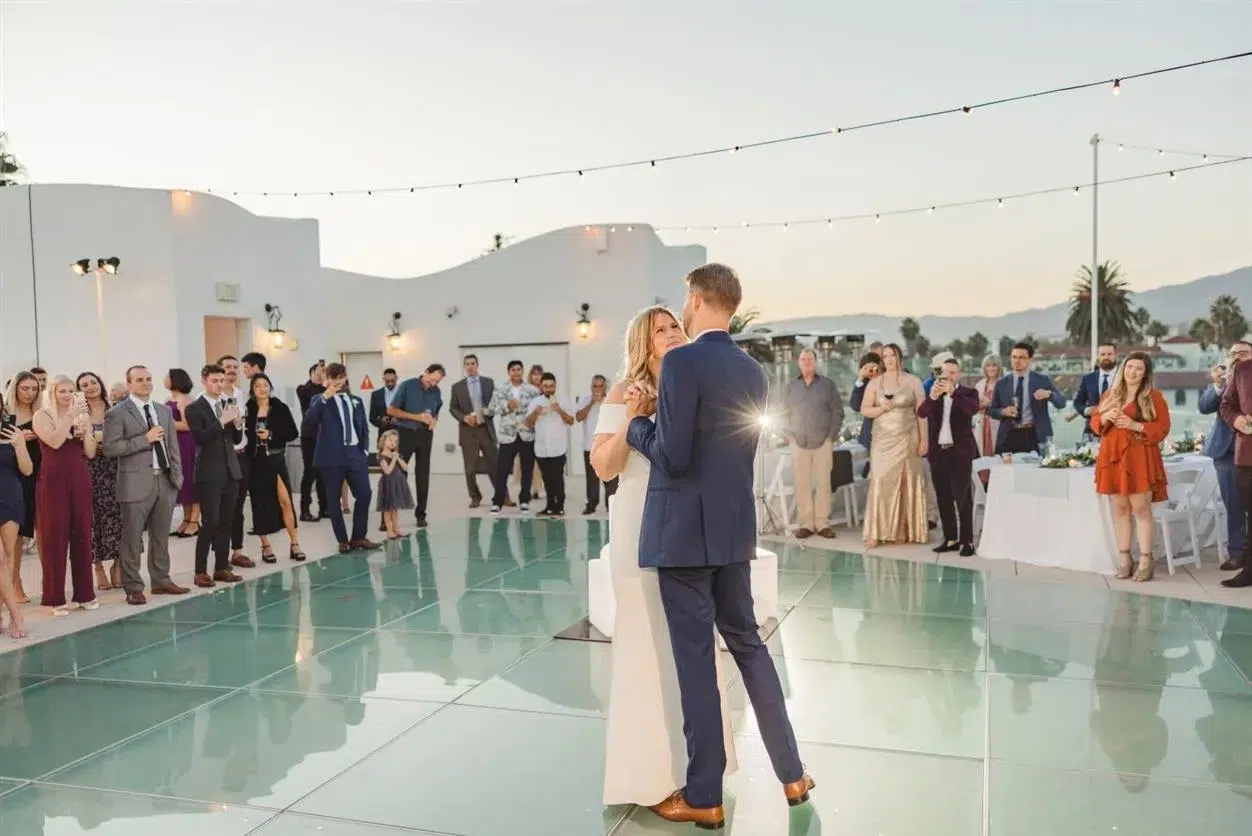
Ensuring safety and efficiency in dance floor and stage installations is a fundamental priority in event planning. From preliminary design to on-site execution, every step must adhere to strict safety standards to protect guests, performers, and crew members. Employing best practices during installation and maintaining structural integrity throughout the event guarantees a seamless and secure celebration. This section outlines the key measures for establishing a safe environment and efficient operational process for both dance floors and staging areas.
Examining Safety Measures for High-Traffic Areas
High-traffic areas such as dance floors require a rigorous examination of safety measures to prevent accidents during moments of intense activity. The installation should feature non-slip surfaces with anti-fatigue properties to reduce the risk of falls and injuries, especially when spills occur. Modern dance floors are often engineered with built-in shock absorption and cushioned underlays that help lower the impact on joints—minimizing fatigue among guests who spend several hours dancing.
Additionally, crowd control is a critical component of safety in busy environments. Installing subtle, yet effective barriers can help pace the flow of people and designate clear pathways for movement. Scientific studies have verified that proper crowd control in venues can reduce the likelihood of accidents by as much as 20% (Brown et al., 2019, https://www.emerald.com). Alongside these measures, the use of emergency signage, adequate lighting, and easily accessible exits further enhances safety. A comprehensive risk assessment should be conducted before the event, addressing potential hazards unique to indoor or outdoor setups.
Aligning Installation Practices With Venue Regulations
Every venue comes with its own set of regulations and building codes that dictate how installations must be executed. Compliance with these legal and safety requirements is paramount to avoid penalties and ensure the welfare of the event attendees. Installation practices should adhere to local fire safety, load-bearing, and electrical regulations. Professional setup teams are typically well-versed in these standards and ensure that temporary structures, including dance floors and staging areas, are secured properly and meet regulatory criteria.
This alignment is achieved through detailed planning sessions that involve close collaboration between vendors, venue managers, and safety inspectors. Documentation of compliance, including certificates and permits, provides an additional layer of assurance that the installation is robust and approved by all relevant authorities. Moreover, regular safety audits and inspections can detect any issues early in the ceremony, allowing for prompt corrective measures. Aligning installation practices with venue regulations not only safeguards the event but also enhances the overall operational efficiency, reducing downtime and ensuring that any unexpected issues are swiftly resolved.
Coordinating With Professional Setup Teams
Engaging professional setup teams is essential for ensuring that all installations, from the dance floor to the staging, are executed with precision and care. These teams bring specialized knowledge and experience, from the proper handling of specialized equipment to insights into the most efficient installation techniques. Coordinating closely with these experts ensures that each element is installed exactly as designed and that the overall setup supports both aesthetic and functional goals.
Professional teams often work according to strict checklists and predetermined timelines, which help in maintaining a smooth flow during event preparation. Their expertise in matching equipment compatibility and integrating ancillary systems—such as sound systems and lighting rigs—further enhances the event’s quality. Client testimonials frequently highlight the reliability and efficiency of professional installation services, noting that such collaboration reduces overall setup time by up to 30%. Effective communication with these teams, coupled with a stringent adherence to safety protocols, guarantees that the dance floor and stage not only look impeccable but also fulfill rigorous safety standards.
Monitoring Structural Integrity During the Event
Once the installation is complete, continuous monitoring of structural integrity throughout the event ensures that the dance floor and staging retain their performance under dynamic conditions. Regular inspections during the event can detect early signs of wear or damage—ensuring immediate intervention before any safety concerns arise. Technology-driven monitoring systems, including sensors that measure load and stress on the floor, are used increasingly to maintain real-time data on the setup’s condition.
For instance, state-of-the-art installations may integrate wireless monitoring tools to alert event managers if excessive vibration or structural fatigue is observed, providing an opportunity to address issues proactively. Regular checks conducted by on-site personnel, combined with periodic system diagnostics, ensure that the equipment remains secure even as guest numbers swell and movement intensifies. This proactive strategy is an integral part of efficient event management, mitigating risks while preserving the overall ambiance and functionality of the wedding setup.
Frequently Asked Questions
Q: What materials are best for indoor dance floors?
A: The best materials for indoor dance floors include high-gloss polyurethane, polished wood, and glass finishes that offer both aesthetic appeal and durability. These materials provide slip resistance, ease of cleaning, and complement sophisticated indoor decor, ensuring both safety and elegance during long events.
Q: How can I ensure my outdoor dance floor remains stable in bad weather?
A: To ensure an outdoor dance floor remains stable during bad weather, choose weather-resistant materials like treated wood or modular plastic panels. Incorporate drainage solutions, waterproof coatings, and consider renting backup tents or covers to provide shelter in case of rain. This preparation minimizes disruptions and maintains the safety of guests.
Q: How do I coordinate the lighting with my stage setup?
A: Coordinating lighting with a stage setup involves integrating ambient LED backlighting, spotlights, and accent lights that complement both the floor’s reflective properties and the overall decor. Proper lighting enhances visual appeal, provides clear delineation of performance areas, and can create a dynamic atmosphere that transitions smoothly throughout the event.
Q: What factors should I consider when renting dance floors?
A: When renting dance floors, factors to consider include the quality and durability of materials, rental package transparency (to avoid hidden costs), customization options, vendor reputation, lead times, setup duration, and compatibility with the venue’s requirements. These considerations ensure a seamless and cost-effective installation.
Q: What are some effective safety measures for dance floors in crowded venues?
A: Effective safety measures for crowded dance floors include the use of non-slip surfaces, proper crowd control barriers, clearly marked emergency exits, sufficient ambient lighting, and regular structural integrity checks. These measures help prevent accidents, improve traffic flow, and ensure overall guest safety during high-activity events.
Q: Can I customize my rented staging equipment?
A: Yes, many rental companies offer customization options that allow you to tailor the design details, such as color, finish, and modular dimensions of your staging equipment. This flexibility ensures the setup aligns perfectly with your wedding theme and overall decor while meeting functional requirements.
Q: How important is vendor reputation in equipment rentals?
A: Vendor reputation is extremely important because it directly affects the reliability, efficiency, and overall quality of the equipment rental process. Reputable vendors provide transparent pricing, thorough service protocols, and quick resolution of issues, contributing significantly to the smooth operation of your event.
Final Thoughts
The success of any wedding event largely hinges on well-coordinated dance floor and staging setups. By evaluating material quality, customization options, and effective safety measures, event planners can create a dynamic environment that delights guests and enhances every performance. Meticulous planning, coupled with transparent vendor practices, ensures that both indoor and outdoor setups function seamlessly. Ultimately, investing in premium event rentals transforms a wedding venue into a captivating and safe celebration space that reflects the couple’s vision and style.

